On Sunday May 7, 2023, a Boeing 737-400 prepared to take off from Yola Airport on a scheduled local service to Nnamdi Azikiwe International Airport in Abuja. Carrying 143 passengers onboard, the aircraft with the tail identifier 5N-MBD was registered to Max Air, which was the only airline that ran a regular service between Adamawa’s capital city and Nigeria’s federal capital.
Shortly after reaching decision speed while taxiing, the passengers suddenly heard a loud bang and the plane shuddered violently. Deferring to their training which stipulates that takeoff cannot be safely aborted after exceeding decision speed, the pilots completed the rotation sequence and got the plane into the sky before taking stock of the situation. The nervous passengers soon began to settle down as the plane reached cruising altitude with no further incident.
In the cockpit, the pilots had figured out the problem. A tyre on the left side landing gear had burst. While this was a serious situation, the fact that they were already airborne gave them nearly an hour to plan for the landing in Abuja. In addition, the fact that the 5 surviving tyres were – like all aircraft tyres – specifically designed to withstand immense weight, temperature and pressure would have given them some comfort. What they did not envisage was that 5 would rapidly turn into 4 as the plane touched the tarmac in the mid-afternoon Abuja heat.

Another tyre explosion followed as the pilots struggled to keep the plane from veering off the runway. The 737’s tricycle landing system made up of 6 tyres had turned into a bicycle system of 4. Terrified passengers onboard said their prayers as they watched airport fire crews rush to douse the superheated mix of molten asphalt, rubber and metal. Fortunately for all involved, the emergency responders did their jobs well, and everyone was able to get off the plane unscathed.
In the ensuing few days, these images of the destroyed wheel section went viral across Nigerian media spaces, but the incident was presented primarily as a triumph of emergency responders and the mercy of God in the face of an unfortunate event. Not many people thought to question why not one, but two tyres that are built specifically to withstand some of the world’s most extreme temperature and pressure conditions would burst in quick succession at the most inopportune times during takeoff and landing.

Exactly 2 months later on July 7, the pilots flying another Max Air Boeing 737 with the tail identifier 5N-MHM on the same Abuja-Yola shuttle route could not get the engines started while preparing to take off from Yola. The reason? An Auxiliary Power Unit shutdown caused by an excessive amount of water in the fuel tanks.
West Africa Weekly reported this story exclusively last month, and the Nigerian Civil Aviation Authority (NCAA) duly responded with an immediate grounding order for Max Air’s Boeing 737 fleet. For once, it seemed as if journalism and regulators had come together to do something great in Nigeria’s civil aviation space, as the country’s worst-run passenger airline finally got hit with long-overdue regulatory action. Emphasis on “seemed.”
Because as is so often the case in Nigeria, the real story taking place behind the scenes was only just getting started.
The Billionaire “Danfo” Owner
Dahiru Barau Mangal is many things to many people. To the general public, he is an unassuming Oil-and-Gas billionaire with a significant shareholding in Oando and a range of diverse business interests in logistics, energy, cement and aviation.

To ousted Nigerien Head of State Mohamed Bazoum, Dahiru Mangal is a close friend, political ally and campaign financier who was not shy about wielding his considerable economic heft in support of Bazoum’s 2020 presidential campaign.
To former Nigerian president Muhammadu Buhari, Mangal was such a close collaborator and loyal political ally that in 2022, he awarded him the Commander of the Order of the Niger – the country’s 2nd highest national honour.
To many however, Dahiru Mangal is something else entirely. In his 2016 book “The Looting Machine: Warlords, Oligarchs, Corporations, Smugglers, and the Theft of Africa’s Wealth,” Financial Times journalist Tom Burgis describes Dahiru Mangal as the smuggling kingpin of Northern Nigeria. According to Burgis, Mangal singlehandedly brought about the collapse of Nigeria’s textile industry, having colluded with Chinese textile makers to copy and mass-produce African textile designs in China before smuggling them into Nigeria in vast quantities via the non-demarcated and unpoliceable border with Niger.
With a fleet of over 600 trucks trafficking every sort of contraband across Nigeria, Chad and Niger, Burgis wrote, Mangal amassed a vast illicit fortune that eventually came to the notice of former Nigerian president Olusegun Obasanjo. Responding to Obasanjo’s apparent displeasure at his involvement in smuggling, Mangal would reinvent himself as a major Northern player in the Oil-and-Gas business while maintaining his smuggling empire, in the process becoming one of Nigeria’s famous subsidy billionaires with influence over energy prices as far afield as Niger, Chad and Burkina Faso.

To those in the Nigerian civil aviation space, Dahiru Mangal is the founder of Max Air, a regional carrier with a puzzling business strategy of offering the cheapest tickets on the market, flying many of the least profitable routes, and using aircraft that are generally not suitable for low-cost, short haul operations in Sub-Saharan Africa.

Since its inception in 2006 when it was called Mangal Air (later rebranded as Max Air in 2008), this airline has pulled up very few trees, choosing instead to focus on connecting Northern Nigeria to major regional hubs and picking up government tenders for the annual Hajj pilgrim airlift.
Over the past 4 years however, the airline has been in the news for only the wrong reasons. An engine pod strike after a botched landing in Minna with 560 passengers on board in September 2019. A ground collision with another aircraft while taxiing at Benin Airport in December 2021. The double wheel loss and landing gear fire on landing in Abuja on May 7, 2023. The water-in-fuel-tank incident in Yola on July 7, 2023. An aborted takeoff in Kano on July 11, 2023 due to high Exhaust Gas Temperature indication. An emergency return to Abuja on July 11, 2023 after the pilots detected overheating in the cockpit.
The NCAA’s response to the last 4 incidents, sparked by West Africa Weekly’s story last month appeared to be swift and decisive. Not only was the operating permission of the offending Boeing 737 fleet withdrawn, but an audit was announced. To those in the know, this was great news because it meant that the airline known to have one of the spottiest maintenance and safety records in Nigeria would be grounded for a significant period of time, if not permanently. There was no way Max Air would pass an NCAA audit.

And they were right. Max Air did not pass the NCAA audit – it did not need to.
On July 29, just 17 days after the NCAA announced the suspension of Max Air’s Boeing 737 fleet, the airline announced that it had received permission to resume flights. From the outside-in, the likelihood that an airline with problems like exploding tyres and adulterated fuel could scale through a comprehensive aviation safety audit in the record time of 2 weeks and 4 days looked more than a little suspicious.
To those in the know however, the situation was a lot worse than the public was aware of. While Max Air announced that it had received regulatory permission to resume operations on July 30, the audit report was not even issued officially until August 1. In other words, Max Air was given NCAA approval to continue operations before the NCAA even concluded its investigation.
It would seem that in addition to being above the Nigeria Customs Service regulations regarding cross-border smuggling and the Nigerian National Petroleum Corporation’s regulations regarding abuse of petroleum subsidies, Dahiru Mangal and “Mangal Air” are also above the Nigerian Civil Aviation Authority’s regulations regarding safe operation of an airline.
To what extent this is, you are about to find out, so strap yourself in.
It gets really wild from here.
NCAA’s Max Air Audit Report: The ‘Danfo’ Of The Skies

For the initiated, part of the charm of Nigeria’s biggest city is watching the ubiquitous Danfo as it weaves its noisy and ungraceful way through the traffic, constantly blaspheming against the laws of physics by not falling apart into a thousand metal pieces the way it really ought to.
Seemingly held together by the frenetic motivation of the potty-mouthed driver to hit the bus owner’s daily revenue quota so that he can earn some money for his family that day, the occasional bit of hopeful welding and sheer material inertia, the Danfo is a physical testament to how adept humans are at indefinitely postponing inevitable outcomes. It really shouldn’t work, but somehow it does. Day after day, month after month, year after year.
The Danfo is the opposite of how an airline should work.
When a whistleblower reached out with a copy of the NCAA’s Max Air audit report, I expected to see 5, maybe 6 major infractions of NCAA regulations. Instead, there were – count them one by one – 48 (FORTY-EIGHT) major safety breaches. This was not an airline – it was a group of yellow VW Vanagon buses floating 35,000 feet above Oba Akran Avenue with 100 instead of 14 souls onboard.
Remember the burst tire incident in May? Here is what caused it. The water-in-fuel-tank thing? Here is what happened, along with all the other things that have been happening behind the scenes at Max Air. Unqualified maintenance staff, unknown suppliers, opaque procurement, skipping of checklists and “managing” of safety situations exactly the way a Lagos Danfo driver manages his beat-up yellow bus – it’s all here.
Here we go.

- Use of expired fire extinguishers.
- No evidence that newly installed landing gear on Boeing 737 with tail identifier 5N-MHM is airworthy or serviceable. Max Air could not explain where it obtained the landing gear from and its operational history, but nonetheless fraudulently recorded its next overhaul date as 21,000 flight cycles/10 years from May 2023.

- Replacement of damaged engine parts with the wrong parts following a bird strike incident on July 3.
- Cannibalising a non-serviceable aircraft without an airworthiness certificate (5N-BDK) for spare parts.
- Use of a non-traceable part without serial number to replace a damaged part.

Failure to install fan blades in pairs as recommended, which could lead to engine imbalance and ultimately catastrophic in-flight engine failure.
- Use of engine fan blades without serial number – the origin of these blades cannot be traced by the NCAA.
- Use of unauthorised staff to carry out the engine ground run servicing procedure carried out the procedure twice on 5N-MBD and twice on 5N-MHM (analogous to a Danfo mechanic letting his apprentice ‘warm’ the engine)

- Use of a single engineer to install an engine on 5N-MHM on February 11, 2023, without a duplicate inspection to look over the installation, a necessary process that is not just essential, but is required by law
- Following the water-in-fuel tank incident earlier reported by West Africa Weekly, it was discovered that the fuel filters in both engines of 5N-MHM were installed by one engineer without a duplicate inspection
- Self execution of maintenance tasks that it is not authorised to execute under the terms of its AOC. (Analogous to a stingy driver saving money on maintenance by getting his local Baba Hakeem aje mokalik to carry out maintenance on a complex CVT gear system)
- Failure to follow 31 different Continued Airworthiness instructions from the manufacturer, which means Max Air’s Boeing 737 fleet is not airworthy and Boeing has zero liability if/when the inevitable air disaster happens.
- Fraudulent recording of the number of flight cycles before a particular maintenance task was due as 25,000 flight cycles instead of the 1,800 flight cycles or 500 flight cycles recommended by the manufacturer, thus fraudulently inflating the window by as much as 50x to save money on maintenance

- Wrongful labelling of a continuous Airworthiness Directive as “terminated” when it is meant to be continuous and ongoing.
- Wrongful labelling of an Airworthiness Directive as “not applicable” because the decision maker apparently had a problem with basic English comprehension…which is possibly explained by the following point:
- Use of only one person to evaluate and make decisions about Airworthiness Directives and Service Bulletins, instead of a team of qualified personnel.
- Unqualified personnel carrying out the highly essential Non-Destructive Testing (NDT) maintenance procedures which ensure structural integrity of aircraft parts. In particular, Max Air workshop manager Ado Musa Kofor Mata has an NDT training certificate issued by an Indonesian training organisation without any apparent accreditation to offer that training.

- Worse still, Mr Kofor Mata’s NDT training certificate only shows that he passed the theory-and-exam segment of training. There is no evidence that he went through any practical NDT training whatsoever.

- Mr Kofor Mata also has no certificate proving that he passed the Near Vision Test and Colour Perception Test – two eye tests conducted every 5 years which are primary components of NDT certification. When any of these certificates expires, the associated NDT certification is also nullified. When asked about this, he told NCAA inspectors that he “has good eyesight and does not need to go for a vision test.”

- When asked by NCAA inspectors to demonstrate how aircraft wheels are built, Mr Kofor Mata did not consult either the airline manual or the manufacturer’s manual which is specific to that aircraft wheel. He instead went exclusively by his “head knowledge” in an industry where everything runs off checklists and manuals.
- When asked a basic technical question about a primary function of his job, Mr Kofor Mata gave a wrong answer.
- The other NDT personnel Akingbehin Olusola Peter has a valid NDT certificate which was issued in 2018 when he was employed by Aero Contractors, hence his training corresponds to the Written Practice developed by Aero Contractors, instead of Max Air.

- Worse still, there is no evidence that Max Air has even developed a Written Practise of its own. In other words, the maintenance team at Max Air responsible for ensuring that aircraft parts maintain structural integrity, are not trained to the same standards or using the same processes, meaning that it is run like a local welder’s shop with multiple welders doing their work they way they are individually familiar with.Good luck to the passengers.
- Mr Akingbehin has no eye vision examination certification.

- Mr Akingbehin has no record of any kind of formal training in ultrasonic NDT and magnetic particle NDT inspection, but Max Air records show that he has been carrying out tasks requiring these methods. Remember that to begin with, Max Air has no permission under the terms of its AOC to even carry out ultrasonic NDT in-house. To save some money, Max Air is illegally performing a maintenance procedure it is not allowed to do in-house, and the procedure is carried out by a technician without the correct eye vision certification and with no formal training on it. Exactly like a Danfo mechanic using his customer’s VW Vanagon to give on-the-job-training to his apprentice.
This is an airline, remember.
- Inconsistencies in maintenance documentation including incorrect procedures referenced in wheel maintenance.
- Wrong procedures carried out by maintenance personnel operating off “head knowledge” instead of consulting the relevant OEM manuals
- Wrong equipment used for wheel inspections

- Calibration of sensitive maintenance equipment by an unaccredited organisation called ‘Gammatec Nigeria Ltd’. This unknown company without a website has no relevant accreditations, is not recognised by the NCAA and does not appear in any of Max Air’s audit plans.
- Nitrogen cylinders in the airline’s tyre store had no identification tags, making it impossible to trace where the “nitrogen” used to inflate Max Air aircraft tyres actually came from, or whether it is indeed “nitrogen.”

Are you putting 2 and 2 together? - Tyre pressure measurement task was signed out but the value was not recorded, meaning the task was never actually done – fraud, malpractice, whatever you call it.
- Tyre pressure gauge check was signed out as “satisfactory” but again the check was never actually carried out

- Inspection of vertical and horizontal stabilisers was signed out as done, but the inspection was done on the tarmac at night without any light to actually carry out the inspection.
- Following the Yola water-in-tank incident on July 7, instead of waiting the 72 hours required to properly treat the contaminated tanks, Max Air instead deployed the aircraft on a Lagos – Abuja flight on July 10 carrying 50 passengers onboard.

Good luck to the passengers. - After the crash landing in Abuja on May 7, Max Air inspected only the damaged left hand landing gear and completely ignored the right hand landing gear which took most of the weight of the aircraft’s weight during landing.
- No records for some parts installed on Max Air planes including emergency slides and oxygen generators, which have a limited lifespan. This means that Max Air does not know when some of the important components on its planes will reach the end of their lifespan.
- 5N-MHM – the Yola water-in-tank aircraft has a completely outdated list of installed parts, which means that there are no records whatsoever to indicate what parts are currently installed and when they will need maintenance. That aircraft in particular, is being operated based on pure optimism.

- Max Air has no contract with fuel suppliers so as to save money. The result is that suppliers have to compete to supply the airline on a weekly basis, leading them to compromise on fuel quality so as to offer low prices. This was confirmed by a separate whistleblower close to the airline.
- Max Air has not audited any of the Approved Training Organisations it uses to train its technical staff. It treats every external supplier like a replaceable bus conductor who is paid on a daily basis.
- Max Air uses Goal energy, a fuel supplier that is not approved or recognised by the NCAA.
- Max Air does not have a clearly explained process for fueling and defueling its aircraft.
- Max Air did not include a water check in its checklist items for some of its Boeing 737 fleet.
- Max Air has only one staff member handling planning and one handling technical records. Both of these roles are supposed to be carried out by experienced teams.
- Some unscheduled maintenance tasks carried out by Max Air engineers have no written Work Order supporting them, meaning there is no clear direction for what the engineer should do. This exponentially increases the risk of human error during maintenance.
- Max Air does not generate reliability reports or review non-routine maintenance tasks generated during scheduled maintenance. Maintenance is essentially ad-hoc and on-the-fly.
- Transit checks in Port Harcourt and Yola were carried out by pilots instead of certifying staff, despite the pilots not being trained to perform those checks.

- Max Air does not follow its own manual for ensuring competency of engineers and technical staff.
- Max Air’s Boeing 737 Airworthiness Maintenance Program is out of date.
NCAA Plays Ball With Max Air In Unfolding Travesty
10 days after the release of this audit report, the NCAA hurriedly reversed its decision to permit Max Air’s flying Matatus into the sky, citing the reasons that should have been audible to the deaf and visible to the blind in the first place.

Aviation industry insiders I spoke to were still less than happy with this decision, noting that the issues identified in the audit report went beyond just Max Air’s 737 fleet, but were systemic to the entire airline.
Speaking under the condition of anonymity, a highly placed FAAN official said,
“Their (NCAA’s) decision to suspend only the 737 fleet doesn’t go far enough. The audit clearly shows that the entire airline has no business in our airspace. It is not an aircraft issue. The entire operation of Max Air should have been suspended and not just the 737. They also have a 747 and a 777 in their fleet.”
Ordinarily, this would be where this story ended – the NCAA grudgingly got round to doing part of the right thing after faffing around, and everyone (sort of) lived happily ever after.
But well, this is Nigeria.
Just one week later, the NCAA again reversed its position, quietly releasing Max Air’s Boeing 737 with registration number 5N-MDB for regular flight operations once again. An insider within the airline informed me that NCAA Director of Operations, Licensing and Training Capt. Ibrahim Bello Dambazau, and NCAA Director of Airworthiness Standards Engr. Gbolahan Abatan are front and centre of the effort to ensure that Max Air is cleared to keep on flying no matter what. According to her, the second 737 with the registration number 5N-MHM is also being quietly pushed for reentry into Nigerian airspace.
A little research into these men gives us a peek into why they are doing this. It will be recalled that since June, West Africa Weekly has run an aviation series highlighting the terrible state of Nigerian aviation and the spectre of a looming air disaster due to regulatory laxity and malfeasance. On August 1, a light single-engine Jabiru J430 with registration number 5N-CCQ crashed on Oba Akran Avenue, Ikeja, Lagos.
This aircraft, it turned out, was maintained at an aircraft maintenance facility called Airfirst Maintenance and Engineering Limited. The owner of Airfirst just so happens to be…

With referees like this, who can call a foul?
Read more: When Abuja Follows You To Abidjan
Following Yesterday’s Story, The NCAA Has Finally Suspended Max Air’s 737 Fleet







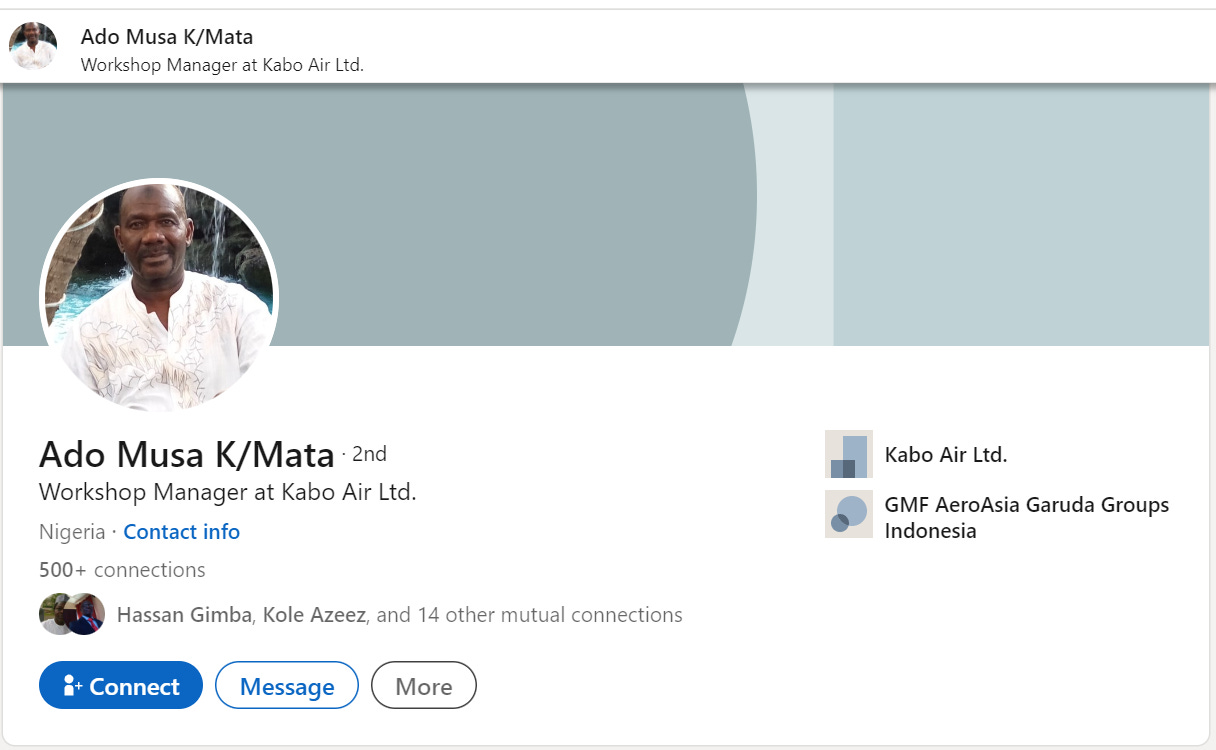


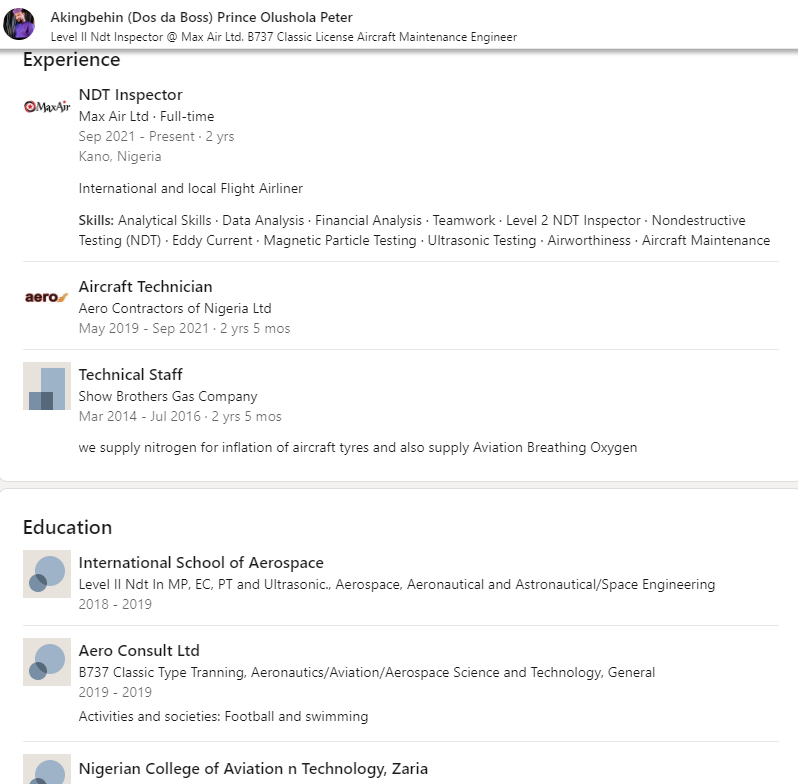


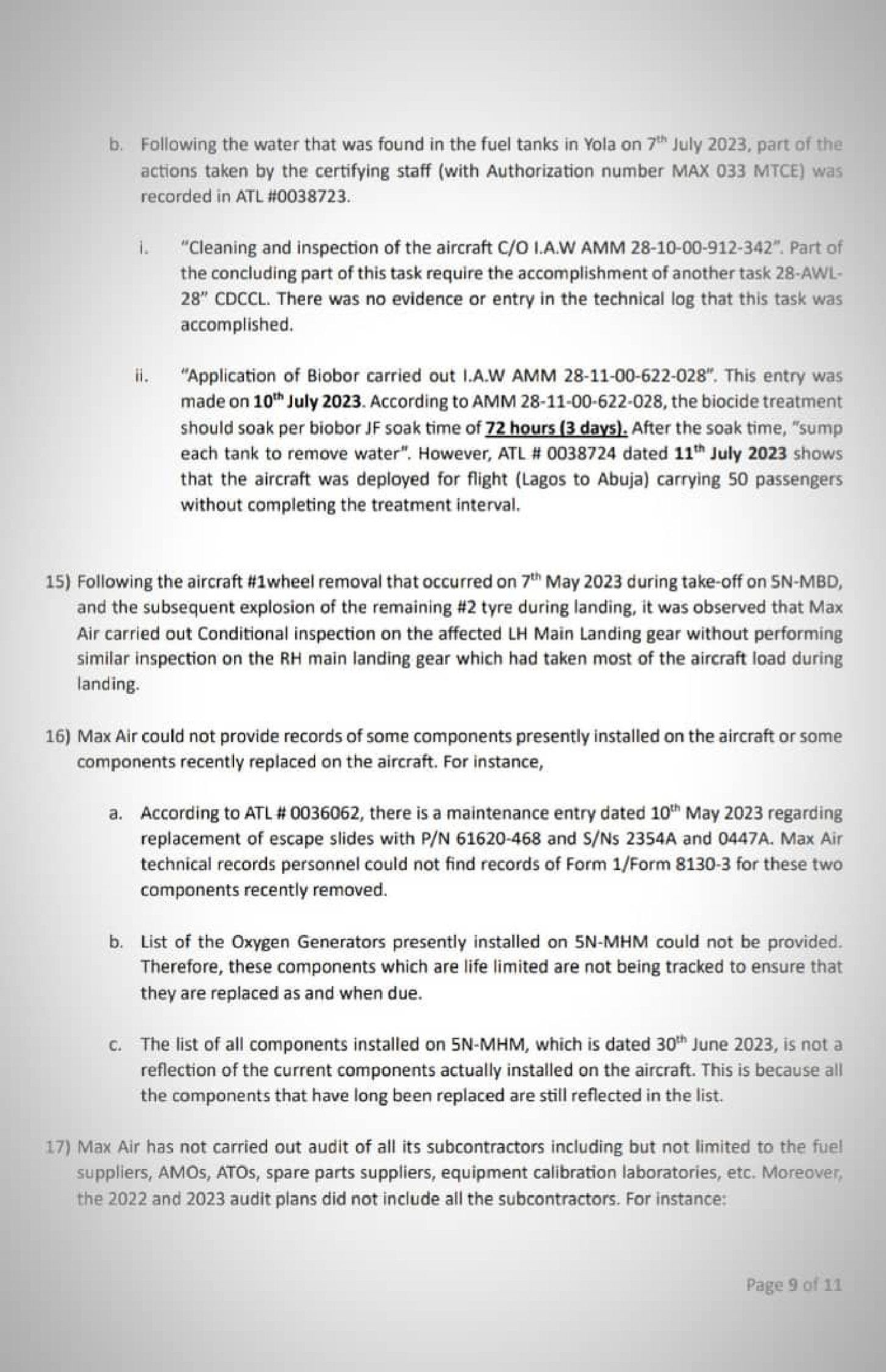
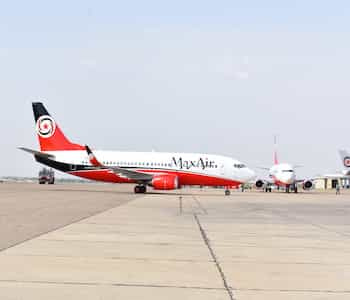

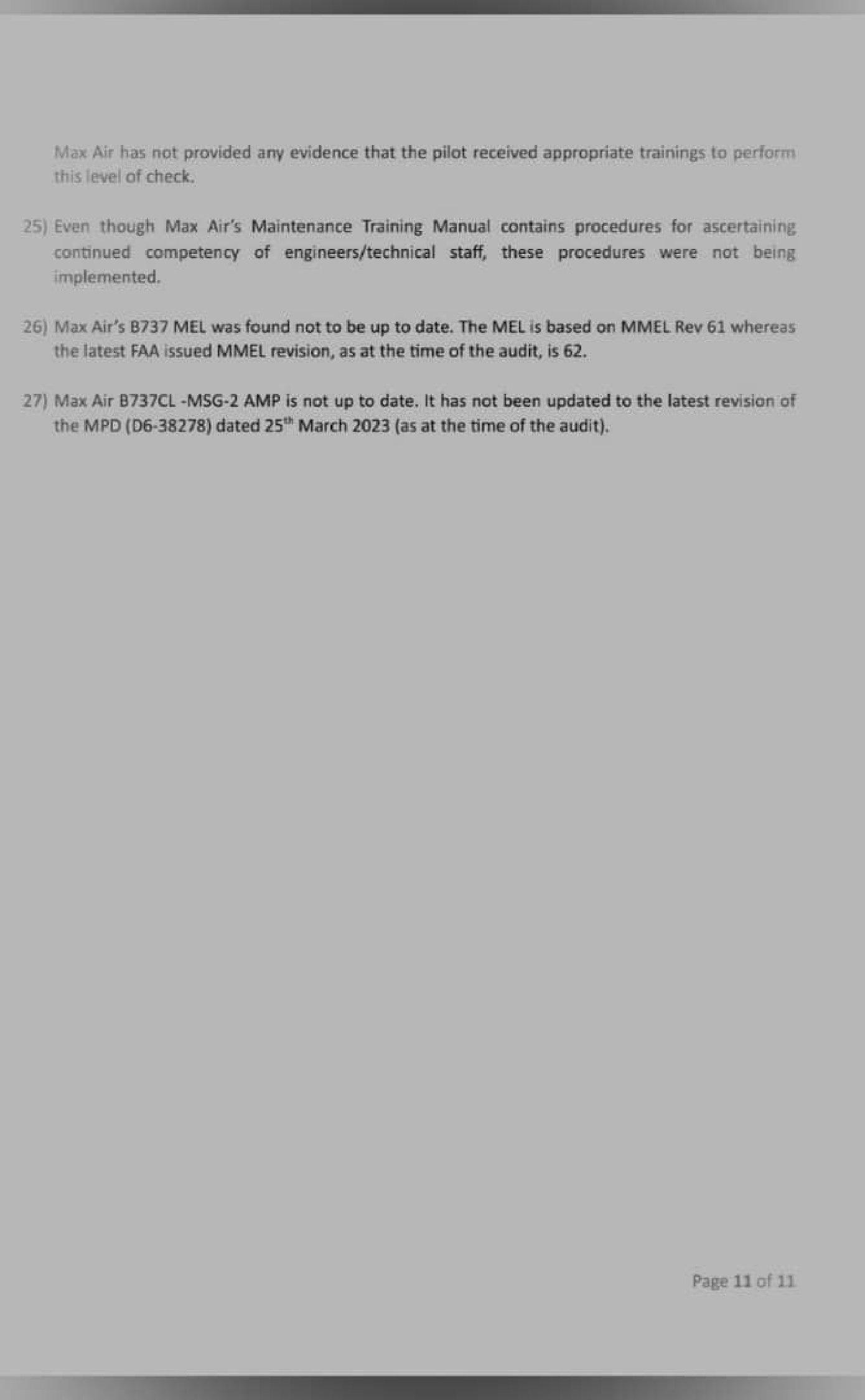
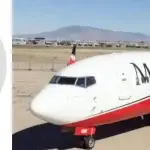

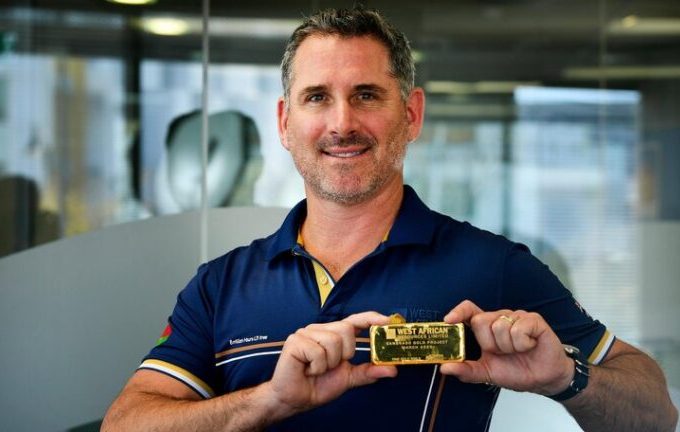

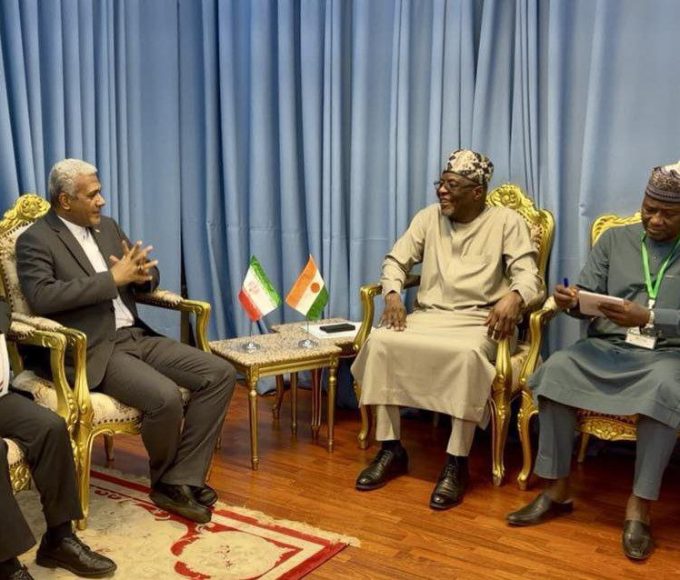
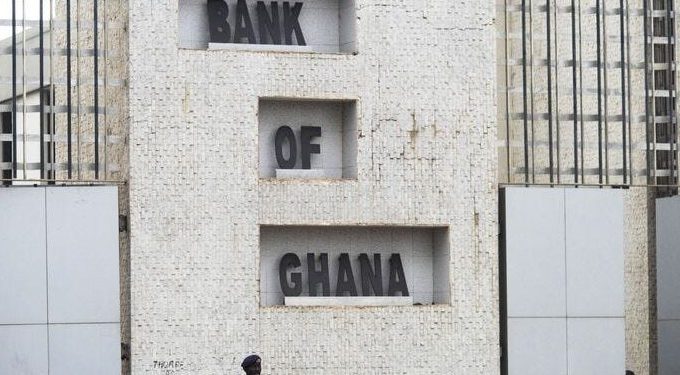
Leave a comment